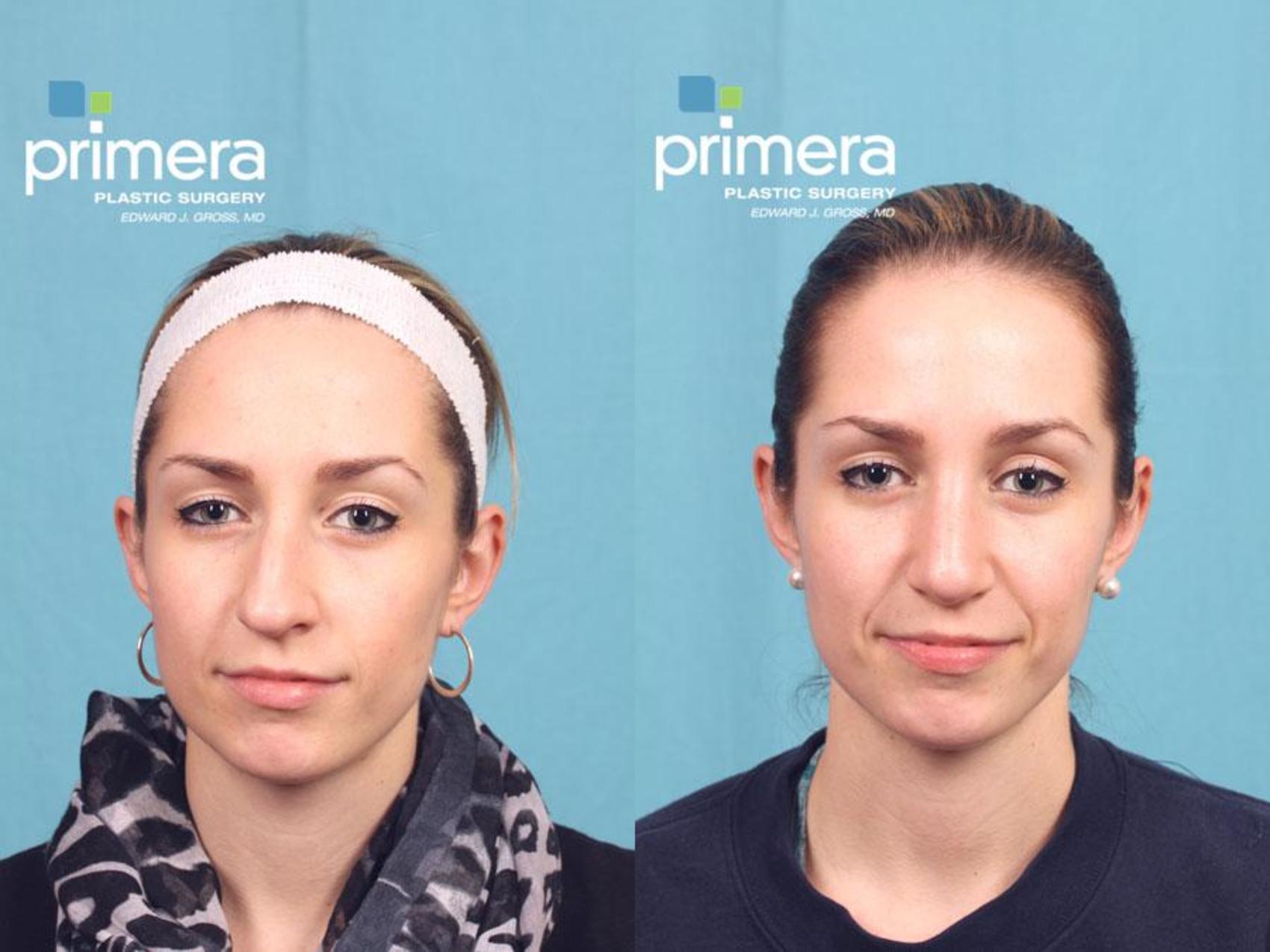
If you’re among the small percentage of rhinoplasty patients who are unhappy with their original nose job results, it may be time to consider revision rhinoplasty. After all, your nose is one of your most prominent facial features, and it should help balance and complement your overall appearance.
Whether you’re pursuing rhinoplasty tip revision, cartilage revision breathing improvement , or exploring other options to improve your initial nose job results, review our breakdown of common rhinoplasty revision treatments. Then, seek an experienced, double board-certified facial plastic and reconstructive surgeon who can safely and expertly deliver the nose you’ve always envisioned.
Cartilage Revision Rhinoplasty
When people ask what is revision rhinoplasty, the answer almost always involves cartilage reconstruction. Why does cartilage play such a prominent role in revision rhinoplasty? Sometimes, cartilage is not removed correctly during the original surgery, leading to aesthetic and functional concerns. During revision rhinoplasty, we also commonly use cartilage grafts to replace damaged cartilage and enhance the structure, appearance, and function of the nose.
Nasal Tip Revision
Rhinoplasty tip revision addresses aesthetic concerns such as a pinched or bulbous nasal tip. The procedure may involve correcting dents or narrowing nostrils to achieve the desired results. Tip plasty is commonly used during revision rhinoplasty to refine and reshape the nasal tip without making structural changes to the rest of the nose.
Dorsal Hump Reduction
Are you still feeling self-conscious about a bump or hump on the bridge of your nose after undergoing rhinoplasty? Revision rhinoplasty can remove excess bone and cartilage to create smoother contours and help you achieve a more refined and streamlined profile.
Scar Tissue Revision
Scar tissue is a part of healing; it’s your body’s natural response to any type of surgery. However, different factors affect how much scar tissue is formed, and sometimes excessive scar tissue must be removed to improve nasal appearance or function—or both. Scar tissue revision involves reopening the nose, cutting through scar tissue, and re-sculpting the nose to the desired shape. Excess scar tissue is very thick and difficult to manipulate within the small confines of the nasal structure. We can perform a detailed analysis using cutting-edge computer imaging to determine the best rhinoplasty revision approach.
Improving Breathing & Nose Function
Your nose is intricate and complex. In trying to improve the appearance of your nose, your original surgeon may have inadvertently compromised your nose function. Perhaps too much cartilage was removed, causing the sides of the nose to collapse and limiting the airflow through your nostrils. Maybe an internal nasal valve needs to be reinforced or reconstructed to improve airflow and alleviate breathing difficulties. If you have breathing problems after healing from a rhinoplasty, choosing a rhinoplasty revision surgeon with expert precision is essential.
You deserve a second chance at getting your nose job right. Whether you want to restore the appearance or function of your nose, a revision rhinoplasty can help you achieve the rhinoplasty results you’ve always desired. We encourage you to request a consultation online or call us at (407) 333-3040 to arrange an appointment.










Leave a Reply